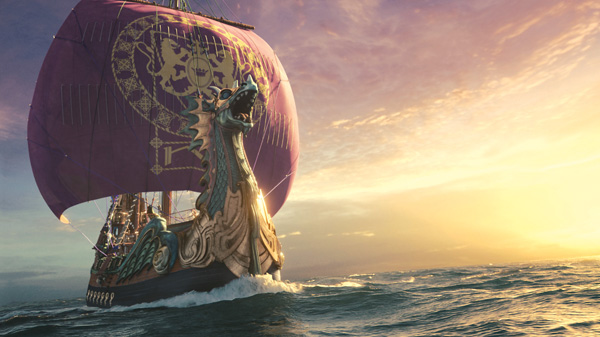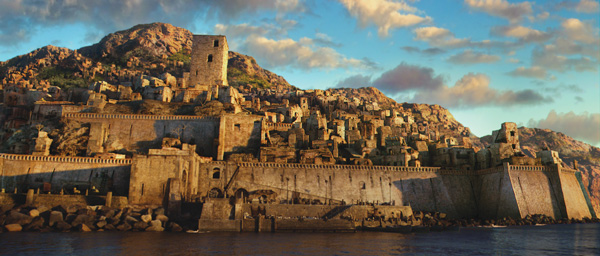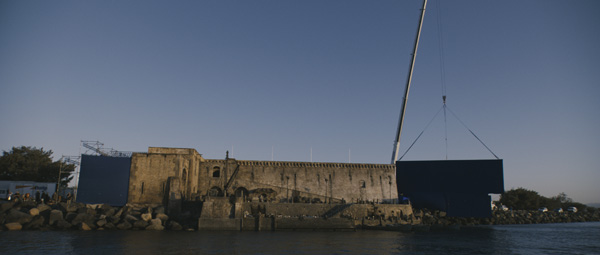
Narnia is a place where stars fall to earth to share their magic, mice are fencing champions and treacherous mists prey on the dreams of heroes. The Senate VFX, Cinesite and MPC describe their adventures through ‘The Chronicles of Narnia: The Voyage of the Dawn Treader’.
 |
  |
|
The Senate VFX completed 250 exciting shots for 'Dawn Treader', 215 of which appear in the finished film, covering full-scale CG environments to embellishments to bring some of the magic to Narnia. Spitfire "The crew wasn't able to achieve the first part of the shot, but we did manage to create moves that simulated the way a crane moves in terms of tilt, pitch and height, and stitched the live action camera onto their 3D camera," explained VFX Supervisor Richard Higham. Consequently, the first part of the shot is the invented camera, and the second part is live action, still displaying our 3D buildings in the background. The only real objects in the scene are the people crossing the road, the road itself and the railings. The buildings are all CG – the gatehouse and walls, King's College chapel and other college buildings – requiring extensive detail and time." Turning Blue They were able to follow the previs'd camera move right down to where the real camera began, shooting people on the street. The idea was to let the audience wonder for a few moments whether they were already in Narnia, revealing only the colourful stained glass window, stone structures, spires and ramparts. But the Spitfire was their first clue of England, also created by The Senate VFX team. Unfortunately, no architectural layouts or drawings for Cambridge University were available, which is why they needed so much photography. Michael Apted had spent some years in Cambridge and wanted a very accurate result. They had to calculate positions from multiple photos and correct distortion in others shot with different lenses, using tools in Photoshop and their compositing software. Bell Tower The artists based their model on another they had built for 'The Da Vinci Code' for the Council of Nicaea shot. The team handed over the model to the Art Department to experiment with and modify, and when it came back, they touched it up and textured it, and added shaders. "In this environment, I think the decision to use a full 3D environment was smarter than adding 2D elements because we could give it more scope and a sense of depth, including light. Of course, without blue screen, everyone had to be individually rotoscoped out throughout the sequence and the new background placed behind them." |


















